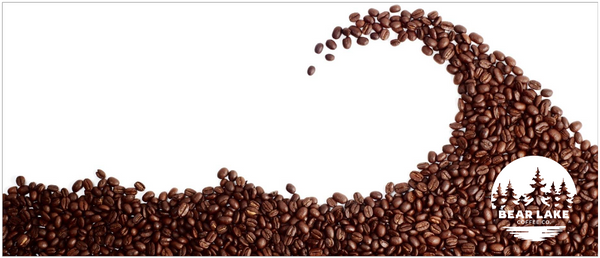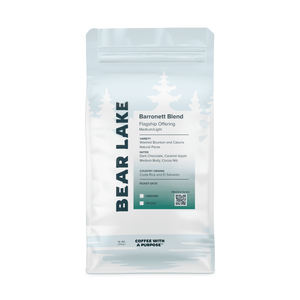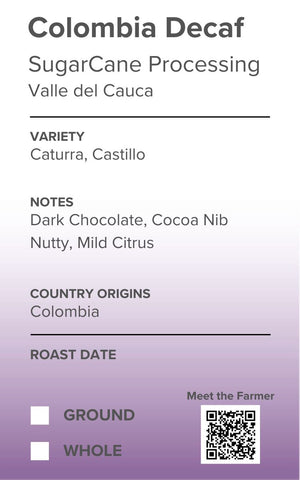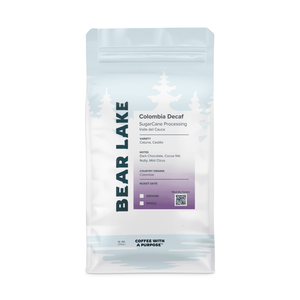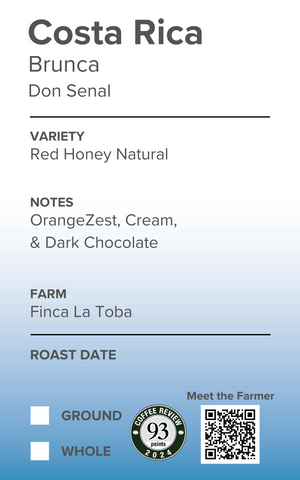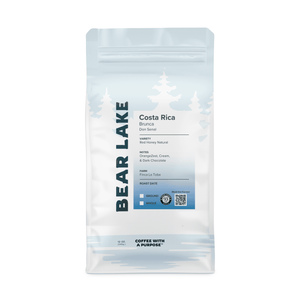Join Us on the Fourth Wave of Coffee!
Wow, where did January and February go! 2023 is off to a fast start here at Bear Lake Coffee Co.
I had the opportunity to attend Q Arabica Grader Training delivered by @colabops in historic downtown Charleston, SC at Balzac Brothers. It was fun to train with some great coffee entrepreneurs and professionals, including Rodrigo Matias @Bean Belt Coffees, Nick Hauser @Indah Coffee Co., Gordon Galloway @Bottleneck Coffee, Jesse Berry @Dupuy Group, Annette Blanc @Personal Best Coffee, and Larz Robison @PineStateCoffee. I spent a week learning all about the coffee value chain (see Figure 1) and how a nonprofit organization called the Coffee Quality Institute works with coffee producers, processors, traders, and other industry stakeholders to promote the production of high-quality coffee that is both economically viable and socially and environmentally responsible.
 Figure 1 – Coffee Value Chain (Source: ITC)
Figure 1 – Coffee Value Chain (Source: ITC)
Our group covered a lot of ground in a short period of time. The discussion about the history of the coffee industry, referred to as “The Coffee Waves,” was very interesting. For this post I want to talk about the “waves of coffee” and reflect on where this industry has been and what I see driving and shaping the next wave of coffee. The term “coffee waves” was coined in the early 2000s, and defines coffee movements as waves of mass production and distribution. Each wave marks a significant shift in the global coffee industry. As of today, there are four defined waves and we are technically on the back end of the 3rd wave, entering the 4th.
 Figure 2 – Coffee Waves (Source: ITC)
Figure 2 – Coffee Waves (Source: ITC)
Let’s review each wave briefly!
First Wave: Commodity Coffee (late 1800s–1960s)
 Figure 3 – First Wave of Coffee (late 1800s–1960s)
Figure 3 – First Wave of Coffee (late 1800s–1960s)
The first wave of coffee began in the late 1800s when coffee was viewed as a commodity product traded on global markets. It was characterized by the rise of mass-produced, pre-ground coffee that was sold in cans and could be easily brewed at home. The first wave of coffee is defined by coffee’s increasing availability and commodification, or transformation into an object of global trade. The first wave brought coffee into homes and offices so that it became part of our daily ritual. Companies like Folgers and Maxwell House led this wave, providing us quick, convenient, and affordable drip coffee, made by brewing in a percolator or a drip coffee maker at home. Nestlé also launched soluble coffee brand Nescafé in the early 1930s.
Second Wave: Specialty Coffee (early 1970s–1990s)
 Figure 4 – Second Wave of Coffee (late 1960s–1990s)
Figure 4 – Second Wave of Coffee (late 1960s–1990s)
The second wave started in the 1970s with companies like Starbucks and Peet’s Coffee & Tea. Consumers no longer wanted a commodity “cup of joe” at home; they wanted a higher-quality experience. Starbucks and Peet’s provided comfortable spaces to purchase specialty coffee beans with an indication of origins; coffee beverages thus became more elaborate and sophisticated. This wave brought in higher-quality espresso-based drinks like cappuccinos, lattes, and macchiatos, which were served in cafés, coffeehouses, and restaurants.
Third Wave: Craft Coffee (2000s–2010s)
 Figure 5 – Third Wave of Coffee (2000s–2010s)
Figure 5 – Third Wave of Coffee (2000s–2010s)
The third wave of coffee gained momentum in the early 2000s, and is characterized by a focus on quality and craftsmanship. Consumers began to understand and appreciate coffee variety, origin, processing, roast profile, and how brew methods affect the final taste. The Cup of Excellence propelled the rise of specialty coffee and global recognition of coffee farmers. Companies like Intelligentsia Coffee, Stumptown Coffee Roasters, and Blue Bottle Coffee propelled this wave with an elevated focus on sustainability (fair trade practices, certified organic, etc.), quality (story behind the cup), and innovation (in both coffee-processing techniques and new craft beverages). This wave ushered in skilled baristas serving up pour-over coffee, artisan espresso-based drinks, cold brew, nitro cold brew, single-origin espresso, and alternative milk-based coffee drinks.
Fourth Wave: …? (2020s–)
 Figure 6 – Fourth Wave of Coffee (2020s–)
Figure 6 – Fourth Wave of Coffee (2020s–)
The fourth wave of coffee is a debated topic in the industry; there is no consensus. Some say this wave will be all about commercializing specialty coffee and expanding the use of ready-to-drink coffee beverages being pioneered by companies like La Colombe and Nestle. At Bear Lake Coffee Co. we believe this wave will be about pushing the existing boundaries to promote a more sustainable coffee value chain for the farmers and our planet. It’s a fact that prices paid for green specialty coffees often do not cover the full cost of production for farmers. Also, we know agricultural practices focused on mass production are depleting soils and contributing to climate change. Lastly, we know we all need to lean harder into recycling and tapping green energy sources in all areas of the coffee value chain. The fourth wave I believe will be less about intentions and more about transparency and making an impact.
Additionally, I believe this wave will drive us to “Think globally, act locally” even more; it will make us embrace the fact that we are all interconnected and that true change starts with our intentional small acts. Famous American historian Howard Zinn once said, “We don't have to engage in grand, heroic actions to participate in the process of change. Small acts, when multiplied by millions of people, can transform the world.”
Closing Thoughts
Thank you for reading! Are you ready to join the fourth wave of coffee with us? It’s a movement that believes in changing our world one small act at a time. With your support we can make real change together! And when you become part of it by joining our coffee club, you will be helping not only us but yourself and the planet too!
Sources:
- Coffee Quality Institute provides coffee education throughout the coffee value chain
- The Coffee Guide, Fourth Edition | ITC (intracen.org)
- Folgers® Coffee (folgerscoffee.com)
- Maxwell House
- NESCAFÉ® US (nescafe.com)
- Starbucks Coffee Company
- The Original Craft Coffee | Peet's Coffee (peets.com)
- Intelligentsia | Illuminating Coffee
- Stumptown Coffee Roasters
- Blue Bottle Coffee
- La Colombe Coffee Roasters
- Think globally, act locally – Wikipedia
- Specialty Coffee Transaction Guide
- Howard Zinn – Wikipedia

